Hello everyone, and welcome to the show. If you’re accessing this podcast, you’ve already listened to Rounders: A History of Baseball in America, our main show, and signed up as an exclusive email subscriber.
Thanks so much for continuing to support both of these projects.
So let’s get the show going, starting with memorable historical moments that happened this week
This Week’s Memorable Moments:
September 25, 1956 - Paige Pitches 3 Innings at Age 59
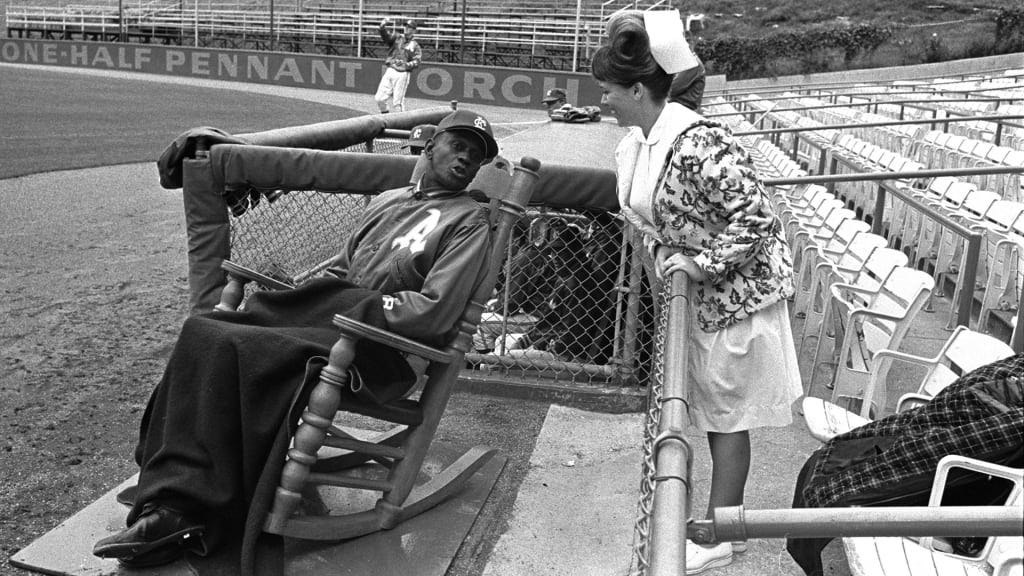
At the age of 59, the legendary Satchel Paige made a remarkable return to the major leagues, pitching for the Kansas City Athletics against the Boston Red Sox.
Despite his age, Paige pitched three scoreless innings, allowing only one hit, defying common perceptions of age limitations in professional sports.
The Athletics' owner, Charles O. Finley, made the event special, dubbing it “Satchel Paige Night,” and inscribed his name on all the Athletics’ uniforms.
September 26, 1981 - Nolan Ryan Throws No-Hitter #5
Pitching for the Houston Astros, Nolan Ryan threw his fifth career no-hitter, setting a new MLB record. He would go on to throw two more in his career, finishing with seven total no-hitters, a record that still stands today.
The game was against the Los Angeles Dodgers, ending with a 5-0 victory for the Astros. He pitched a complete game without allowing any hits, striking out 11 batters and walking three.
September 27, 1914 - Nap Loajoie Reaches 3,000 Hits
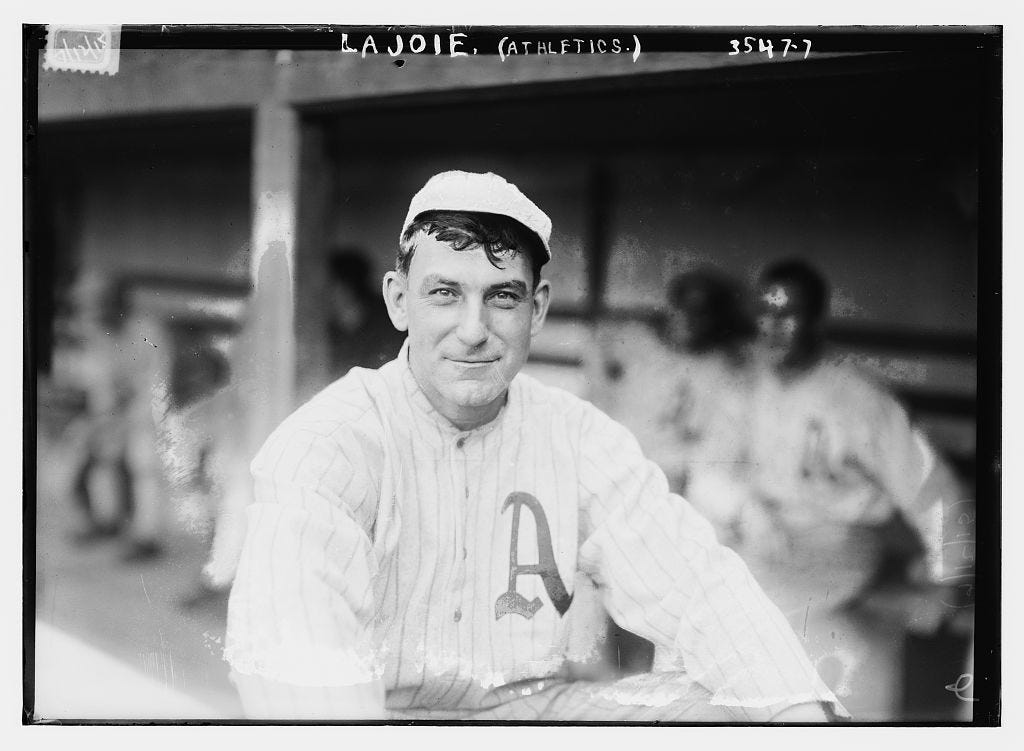
Baseball legend Nap Lajoie achieved his 3,000th hit, marking a significant milestone in his 21-season career. Only two other players, Honus Wagner and Cap Anson, had achieved this feat.
Lajoie's most successful years came while playing for the Cleveland Naps (later renamed the Cleveland Indians) in 1902. During his time with the team, Lajoie consistently ranked among the league leaders in batting average, hits, and RBIs. In fact, he won the American League batting title five times, including three consecutive seasons from 1901 to 1903.
He played in over 100 games in each of his 21 seasons, showcasing his ability to stay healthy and contribute to his team's success.
September 28, 1941 - Ted Williams Hits .406
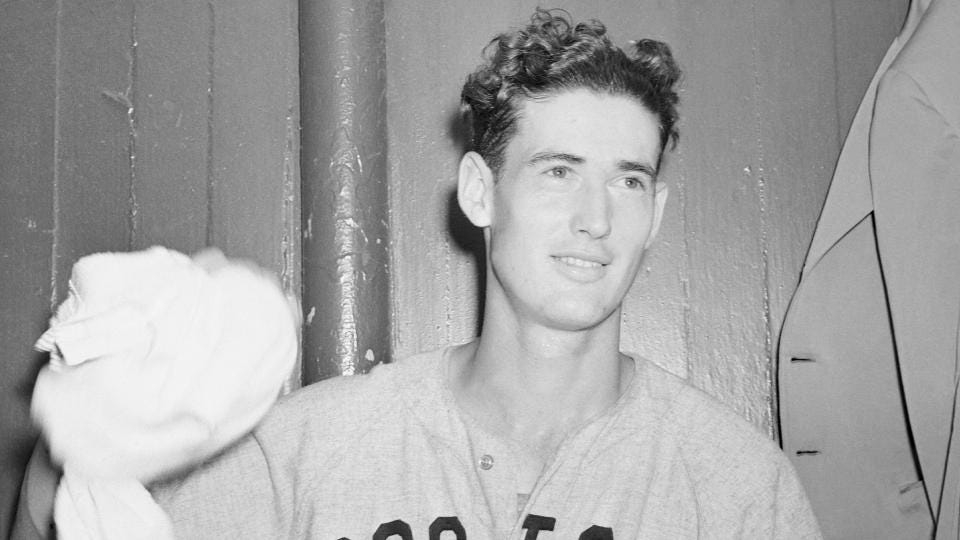
Ted Williams of the Boston Red Sox finished the season with a batting average of .406, becoming the last player to hit over .400 for a season.
Known as "The Splendid Splinter" and "Teddy Ballgame," Williams was a left fielder for the Boston Red Sox. Throughout his career, he established himself as one of the greatest hitters of all time, renowned for his exceptional batting skills.
During the 1941 season, Williams had been putting up remarkable numbers at the plate. As the regular season was nearing its end, there was intense speculation about whether he would be able to maintain a batting average above .400. This milestone had not been reached since Bill Terry achieved it in 1930.
On September 28, the Red Sox faced the Philadelphia Athletics at Fenway Park in Boston. Going into the game, Williams' batting average stood at .39955, which would round up to .400. In the first game of the doubleheader, Williams went 4-for-5, raising his average to .406.
His final stat line for the year read .406 batting average, 37 home runs, 120 RBIs, and an incredible .553 on-base percentage. These numbers earned him the prestigious American League Most Valuable Player (MVP) award.
September 29, 1954 - Willie Mays' Catch Occurs
In Game 1 of the World Series, Willie Mays made an over-the-shoulder catch in the 8th inning, known simply as "The Catch," robbing Vic Wertz of the Cleveland Indians of an extra-base hit. The catch not only prevented the Indians from scoring, but it also allowed the Giants to win the game in extra innings eventually. This play shifted the momentum in favor of the Giants and is often credited as a turning point in the series.
This play is often considered one of the greatest defensive plays in baseball history and has become iconic in the sport. Willie Mays had a legendary career, earning numerous accolades and being regarded as one of the greatest players ever.
September 30, 1927 - Babe Ruth Hits His 60th Home Run
Babe Ruth set a new single-season home run record by hitting his 60th of the year. This record stood for 34 years until Roger Maris surpassed it in 1961 with 61 home runs.
Ruth's #60 came in a game against the Washington Senators at Yankee Stadium in New York City. He hit the milestone home run off pitcher Tom Zachary in the eighth inning, helping the New York Yankees win the game 4-2.
Ruth's record-breaking season in 1927 is often considered one of the greatest individual accomplishments in the history of baseball. His 60 long balls accounted for more than 14% of all home runs hit in the American League that year.
The Yankees, led by Ruth's incredible performance, won the World Series that season, earning them the nickname "Murderers' Row."
October 1, 1932 - Babe Ruth Calls His Shot
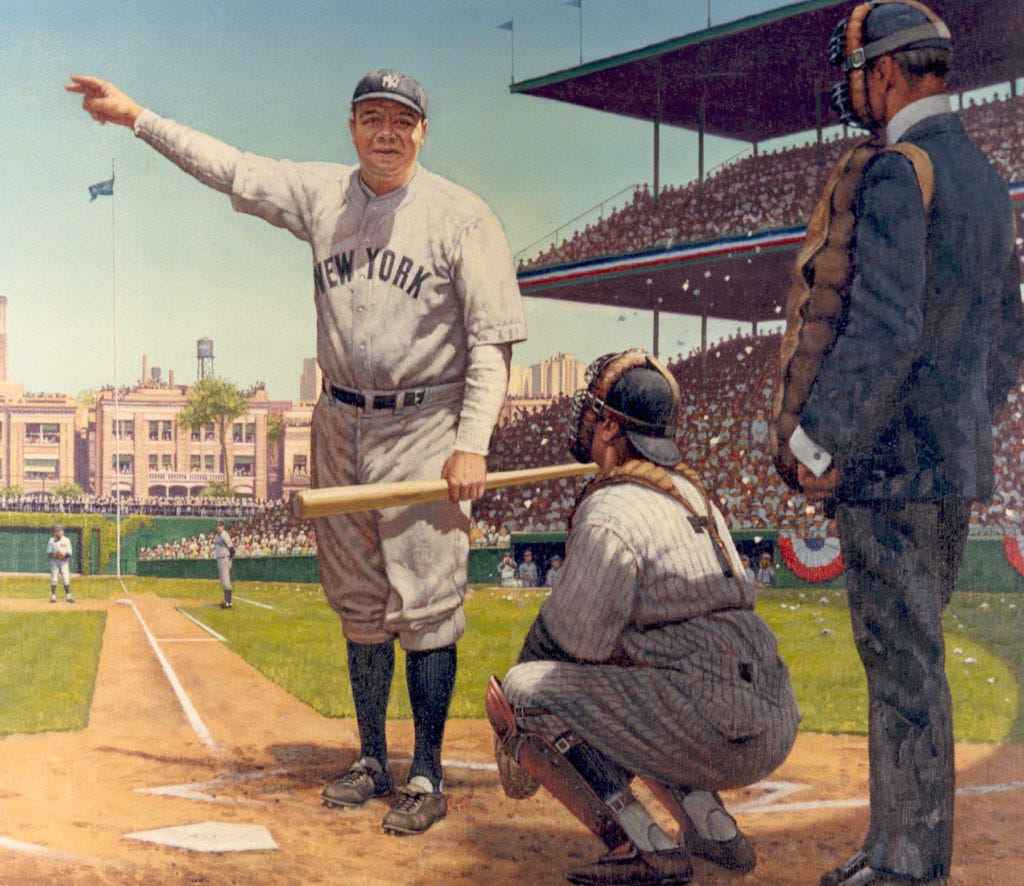
During Game 3 of the World Series, Babe Ruth allegedly pointed to the center field bleachers and then hit a home run to that exact spot on the next pitch. This event, known as "The Called Shot," is one of the most debated moments in baseball history.
In the fifth inning of the game, with the score tied at 4-4, Babe Ruth stepped up to the plate. Facing Cubs pitcher Charlie Root, the legendary slugger was in a tense battle. As the story goes, Ruth pointed towards the center field bleachers, seemingly indicating his intention to hit a home run to that very spot.
The crowd erupted in excitement and disbelief at this bold declaration. And then, in a moment of sheer baseball magic, Ruth swung his bat and sent the ball soaring over the outfield wall, precisely where he had pointed just moments before.
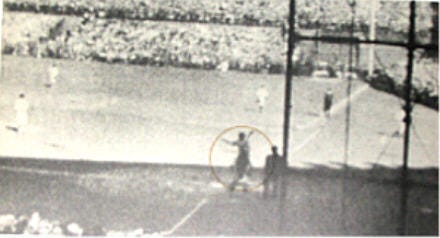
Some witnesses, including Ruth's teammates, claimed to have witnessed the iconic gesture. Others, including Root himself, denied it ever happened. Root maintained that Ruth simply gestured towards the Cubs' dugout, engaging in some friendly banter with the opposing team rather than making a definitive prediction about his next hit.
Unfortunately, the truth behind "The Called Shot" remains elusive due to the lack of concrete evidence and conflicting accounts. The debate surrounding this event has become integral to baseball folklore, captivating generations of fans who continue to speculate and analyze every detail of that fateful day.
Thanks for Subscribing! Would You Consider Financially Supporting Us?
By becoming a paid subscriber, not only are you supporting a show free from corporate agendas, but you'll also get:
The ad-free version of 'Rounders' a whole DAY EARLIER.
A sneak peek at our secret list of upcoming episodes.
A chance to share your thoughts, which I might just read out in the episode.
Exclusive chats, events, and more fun stuff only for our members.
And if you're feeling extra awesome, join our 'Starting Nine' crew. Help shape the show, pick episode topics, and even get a shoutout as a producer.
Let's make 'Rounders' the top baseball history show together!





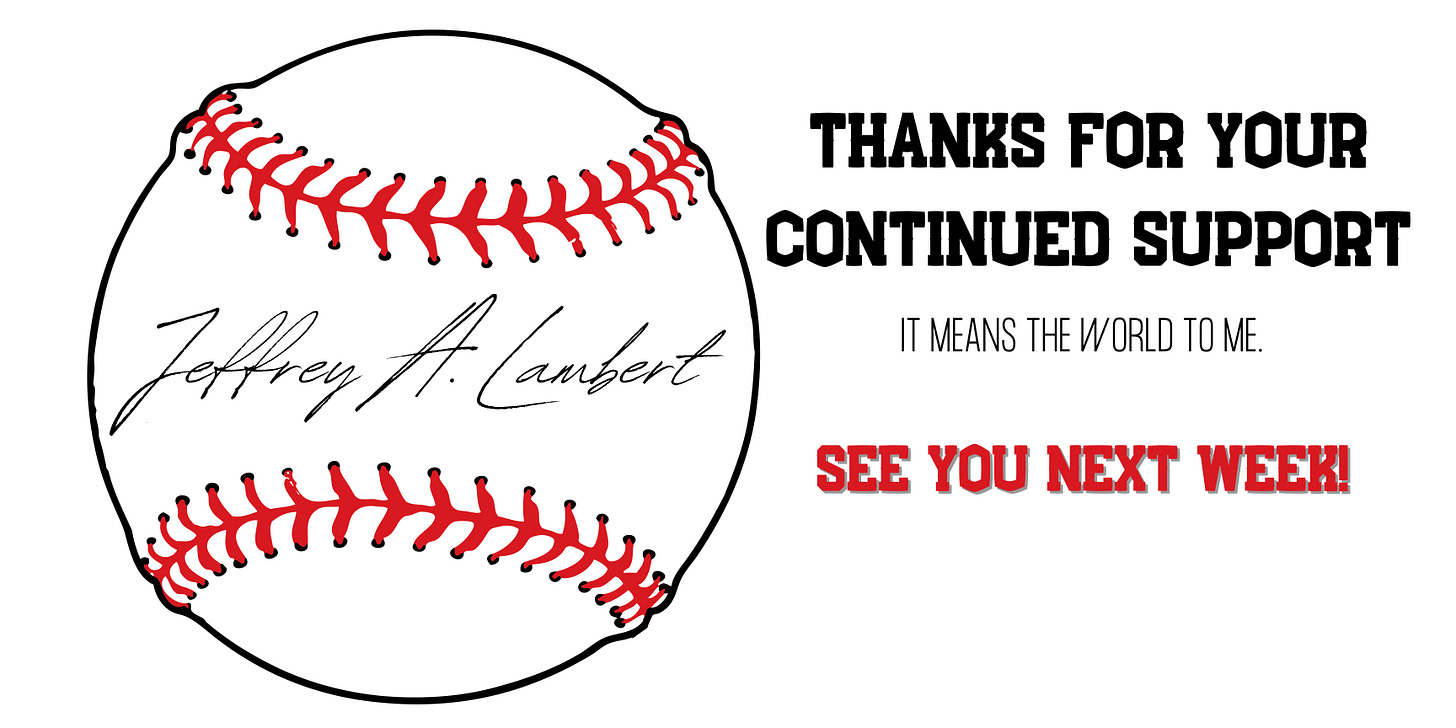



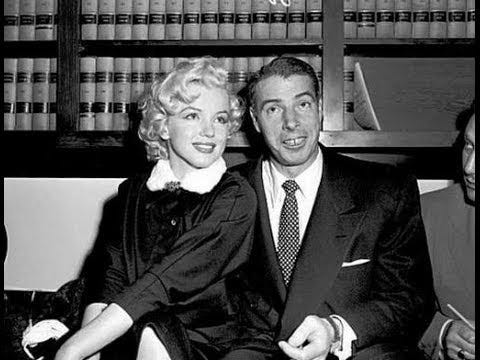
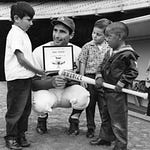

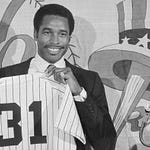
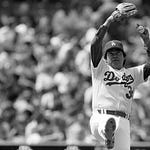

Share this post